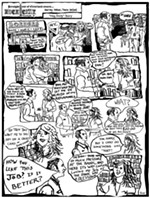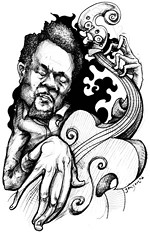Jazz Sides
Fri., Dec. 12, 2003
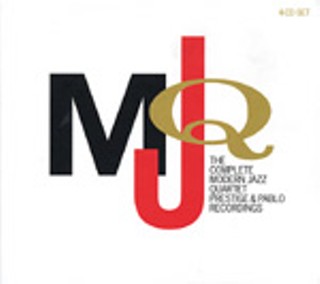
Modern Jazz Quartet
The Complete Modern Jazz Quartet Prestige & Pablo Recordings (Prestige) The Modern Jazz Quartet recorded for Prestige starting in 1952 and left for Atlantic in 1955. They broke up in 1974, but reunited in Japan, where they cut tracks for Norman Granz's Pablo label in 1981. They recorded three more LPs for Pablo in '82, '84, and '85. All of the material on Prestige and Pablo is included on this 4-CD set. Musical director/pianist John Lewis blended baroque and prebaroque classical techniques into his music, and if there were times when this sounded precious, any band that featured Milt Jackson, arguably the greatest vibes player of all time, had to be impressive. Lewis was also a gifted composer, as selections from this set, including "Django," "Milano," "Concorde," "The Golden Striker," and "Odds Against Tomorrow," indicate. He was also a fine, if sometimes fastidious, pianist. In drummer Kenny Clarke the group had an early pioneer of bop, who played with control and authority. Percy Heath was a strong, melodic bassist that really got into the heart of the chords. When Clarke left the band in 1955, he was replaced by Connie Kay, a tasty, sensitive drummer. Though almost 25 years separate the Prestige and Pablo sides, Jackson, Lewis, Heath, and Kay don't seem to have lost a thing. If anything, Lewis sounds more relaxed on the Pablo discs than he did as a younger man. Jackson plays flawlessly on all four discs. In other words, it's all here: technically superb playing and ceaselessly inventive jazz. -- Harvey Pekar![]()
![]()
![]()
![]()
Miles Davis
The Complete Jack Johnson Sessions (Columbia/Legacy) This 5-CD set consists of material spanning February to June 1970. Thirty-four of its 42 tracks are previously unissued, those that did appear showing up on a variety of albums including A Tribute to Jack Johnson, Live Evil, Big Fun, Get Up With it, and Directions. Davis' group during this time was Steve Grossman, soprano sax; Chick Corea, piano; Dave Holland, bass; Jack DeJohnette, drums; and Airto Moreira on percussion. Additions and substitutions to this lineup include: Sonny Sharrock and John McLaughlin, guitar; Ron Carter, bass; Herbie Hancock and Keith Jarrett, keyboards; Billy Cobham and Lennie White, drums; Wayne Shorter, soprano sax; Bennie Maupin, bass clarinet; Hermeto Pascoal, voice and drums. Most of the tracks are built on infectious, repeated rhythms, with Davis in top form. These are some of his finest fusion recordings. His range is good, and he produces a full, compact tone. He's very inventive as well; note the unusual contours of his trumpet lines on the longest version of "Yesternow." McLaughlin turns in earthy work, while Grossman performs with passion and fluidity. Hancock's dissonant organ work on "Right Off" is impressive. If Hancock had continued on the organ, his innovative playing may've had a strong influence. Pascoal's "Nem Um Talvez," "Selim," and "Little Church" are in stark contrast to most of the hard-driving tracks here. They're gentle and dreamy. -- Harvey Pekar
![]()
![]()
![]()
![]()
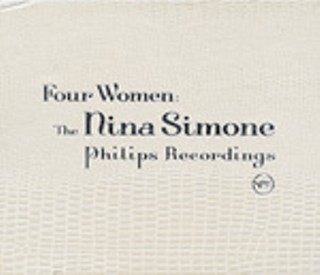
Nina Simone
Four Women: The Nina Simone Philips Recordings (Verve) Nina Simone, goddamn. As the scattershot liner notes to this 4-CD compilation conclude, North Carolina's Eunice Kathleen Waymon, who died this year at the age of 70, was a folk singer sequined with a jazz diva's grandeur. An accomplished pianist with perfect pitch, Simone's seven albums for Philips, 1964-67, record this uneasy union in equally scattershot fashion. The chronologically arranged faux alligator set leads with its tiara, the haunting, pointed, even jolly Nina Simone in Concert, which is bookended by career defining hits "I Loves You, Porgy" and "Mississippi Goddam." The latter segues into "Don't Let Me Be Misunderstood," the lead cut off Broadway, Blues, Ballads, which had far more commercial concerns, maudlin singer, strings, and all. These aspirations continue on disc two, beginning with I Put a Spell on You, which past the title track has precious little mojo. That same year, '65, Pastel Blues was far more beguiling, from "Trouble in Mind" and "Strange Fruit" to one of her career touchstones, 10 unflinching minutes of "Sinnerman." Let It All Out, leading off the third disc, balances the two. Wild Is the Wind is a leftovers LP, maybe the best of the bunch -- fierce, showy, humane. While the first three discs clock in over 70 minutes, the last disc births only '67's High Priestess of Soul, which neatly coalesces Simone's tenure at the label. Live filler from the period should've been a no-brainer and yet is absent. Chances are you'll be hearing more from Ms. GD anyway. -- Raoul Hernandez![]()
![]()
![]()
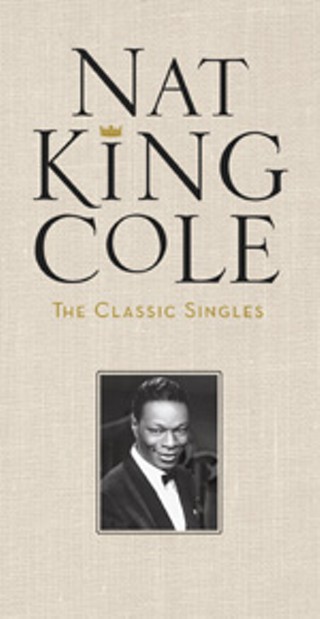
Nat King Cole
The Classic Singles (Capitol) People defining Nat King Cole (1917-1965) as vocalist on "The Christmas Song" can broaden their perspective with more than 100 singles on the 4-CD The Classic Singles, perhaps the most comprehensive overview of Cole's work to date. Sure, there have been numerous hits collections, and aficionados will always lament omissions, but Classic Singles offers a chronological map of Cole's development as a young jazz musician and singer with the Nat King Cole Trio to his emergence as a popular solo artist. Sound quality is pristine, especially on the early work of the first disc (1941-1949), which showcases Cole's incomparable phrasing, and of course, that delectable voice. Disc two ('49-'53) captures Cole at the peak of his popularity, more or less, with "Mona Lisa" and "Unforgettable," before moving into the orchestral era ('53-'56) of the third disc, which is bookended by "Tenderly" and "Ballerina." Disc four ('56-'64) begins with "Stardust" and continues with hits for which he shouldn't necessarily be remembered ("Ramblin' Rose," "Those Lazy Hazy Crazy Days of Summer"). A bound cloth book with biography and photographs also includes notations of each single's recording and release date, chart placement, and master number. A cataloging treasure like Nat King Cole's The Classic Singles is a must. -- Belinda Acosta![]()
![]()
![]()
![]()
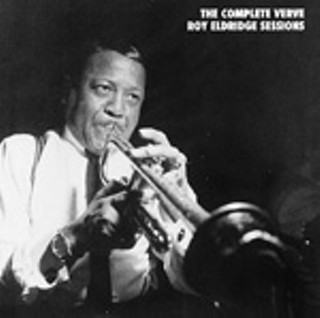
Roy Eldridge
The Complete Verve Roy Eldridge Sessions (Mosaic) Roy Eldridge was one of the most influential jazz trumpeters of the Thirties, playing with a tremendous drive that featured the upper register frequently. By the time he landed at Verve in 1951, however, his work was in decline. Overall, this 7-CD set is good, but it isn't Eldridge at the top of his game. He recorded with a number of stars while on Verve, including Oscar Peterson, Benny Carter, Dizzy Gillespie, and Harry Edison. Generally he's at his best when he plays standards in a relaxed, unpretentious manner, employing a velvety tone and attractive melodic ideas. His work with pianist/organist Peterson's trio and with alto saxman Carter is distinguished in this respect. When Eldridge plays with Gillespie, one of his musical disciples, and the going gets competitive, Eldridge sometimes gets frantic. He sounds like he wants to be as modern as the boppers. Gillespie, on the other hand, sounds fantastic; his work is very complex and daring but logically constructed. One of the best sessions here has Eldridge with his Central Plaza Dixielanders, a band consisting of swing era musicians. Verve producer Norman Granz, noting cornetist Bobby Hackett's success with strings and trumpeter Jonah Jones' popularity in a quartet setting, spotlighted Eldridge in both. The "with strings" sessions, directed by Russ Garcia, is pleasant, although quite conservative. So is the quartet date, Eldridge again benefiting from not having to battle a competitor. -- Harvey Pekar![]()
![]()
![]()
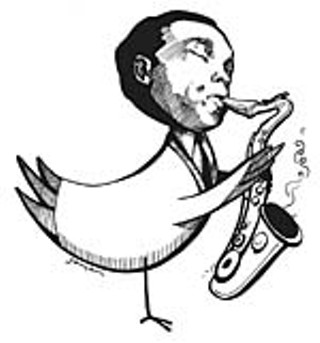
Charlie Parker
The Complete Verve Master Takes (Verve) By the time alto saxophonist Charlie "Yardbird" Parker started recording for Verve Records in 1949 he was already a deity in jazz circles. His revolutionary bebop recordings for the Savoy and Dial labels in the preceding five years forged Parker's indelible legacy as perhaps the greatest improvisational genius the genre had ever seen. This metal-boxed, thoroughly annotated, and user friendly 3-CD collection presents the final chapters of Bird's remarkable, if short-lived, recording career. Arranged chronologically with no bonus tracks, what these Verve masters lack in the frenetic intensity of Parker's earlier small group recordings, they make up for in their refreshing variety of settings and the sparkling lyricism that comes with maturity. Notable is the renowned session with fellow bebop legends Dizzy Gillespie and Thelonious Monk, their sole collaboration. Bird's only studio sides with his colorful trumpeter Red Rodney are here, as are dates with former Austin trumpeter Kenny Dorham and a seasoned Miles Davis. There's also the bizarre session with Gil Evans' orchestral arrangements and a square vocal chorus. Parker was particularly proud of his sessions with strings, and although still pooh-poohed by purists, they were his bestselling records and stand up quite well. And let's not forget the date with Bird soaring in full majestic flight over a roaring big band or the handful of Latin sides that make us pine for his work with Machito, which unfortunately isn't included here. This brilliant music, although not considered his most historically significant, is still essential in appreciating the full measure of Charlie Parker's musical genius. -- Jay Trachtenberg![]()
![]()
![]()
![]()
![]()
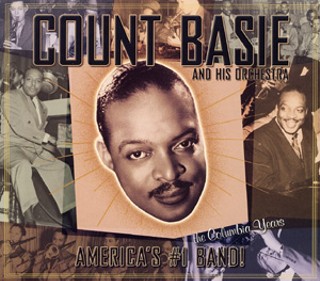
Count Basie & His Orchestra
America's #1 Band! -- The Columbia Years (Columbia/Legacy) The Count Basie band of the late Thirties and early Forties ranked with Duke Ellington's orchestra of the same era as the greatest big band jazz outfit of all time. As some star soloists left, most notably the great tenor saxman Lester Young, it declined in quality, but remained an excellent unit until 1951, when Basie's Columbia tenure ended. This 4-CD set contains three discs' worth of studio sessions, whose fidelity has been greatly improved by remastering; top-notch radio broadcast selections from 1937 to 1941 fill the fourth disc. The first disc begins with one of the most important small groups ever recorded, 1936's Jones-Smith quintet. Here we have a fully evolved Lester Young, who takes breathtaking solos on "Shoe Shine Boy" and "Oh, Lady Be Good," along with the quiet but irrepressibly swinging rhythm of drummer Jo Jones, bassist Walter Page, and Basie's spare, unpredictable soloing. Basie assembled excellent octets in 1950-51, full of fine bop musicians such as trumpeter Clark Terry, clarinetist Buddy DeFranco, tenor saxist Wardell Gray, and baritone saxman Serge Chaloff. The big band studio tracks from the second and third discs are irresistibly buoyant. Classics like "Taxi War Dance," "Clap Hands! Here Comes Charlie," "Pound Cake," "Tickle Toe," and "Louisiana" are among them. When Young left Basie, other brilliant tenor players including Coleman Hawkins, Don Byas, and Illinois Jacquet filled in. Note vocals on three tracks by Billie Holiday. Loren Schoenberg's thoughtful and detailed liner notes also deserve praise. -- Harvey Pekar![]()
![]()
![]()
![]()
![]()





